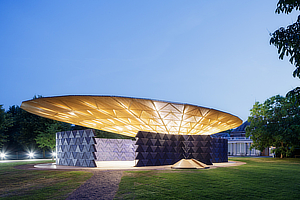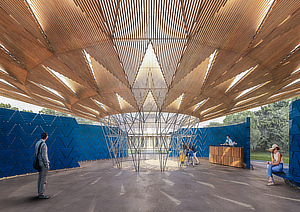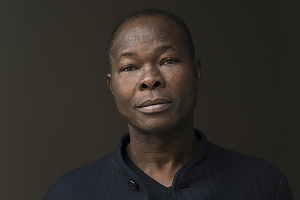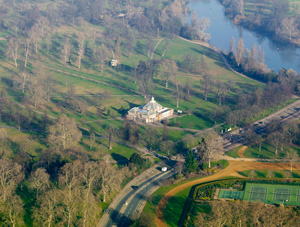 |
 |
 |
 |
 |
 |
| |
 |
|
 |
 |
 |
  |
  |
 |
 |
 |
 |
|
|
 |
|
 |
 |
 |
BUILDING |
 |
|
 |
|
 |
 |
 |
| |
 |
| 
 |
Serpentine Gallery Pavilion
|
|
 |
 |
 |
 |
DESIGNER |
 |
|
|
 |
|
 |
 |
 |
| |
 |
|
 |
 |
 |
 |
CONTEXT |
 |
|
|
 |
|
 |
 |
 |
| Relationship with the location |
 |
|
 |
|
 |
 |
 |
 |
 |
 |
 |
DESCRIPTION |
 |
|
|
 |
|
 |
 |
 |
| . |
 |
|
 |
 Diebedo Francis Kéré, the award-winning architect from Gando, Burkina Faso, has been commissioned to design the Serpentine Pavilion 2017, responding to the brief with a bold, innovative structure that brings his characteristic sense of light and life to the lawns of Kensington Gardens. Diebedo Francis Kéré, the award-winning architect from Gando, Burkina Faso, has been commissioned to design the Serpentine Pavilion 2017, responding to the brief with a bold, innovative structure that brings his characteristic sense of light and life to the lawns of Kensington Gardens.
Kéré, who leads the Berlin-based practice Kéré Architecture, is the seventeenth architect to accept the Serpentine Galleries' invitation to design a temporary Pavilion in its grounds. Since its launch in 2000, this annual commission of an international architect to build his or her first structure in London at the time of invitation has become one of the most anticipated events in the global cultural calendar and a leading visitor attraction during London's summer season. Serpentine Artistic Director Hans Ulrich Obrist and CEO Yana Peel made their selection of the architect, with advisors David Adjaye and Richard Rogers.
 Inspired by the tree that serves as a central meeting point for life in his home town of Gando, Francis Kéré has designed a responsive Pavilion that seeks to connect its visitors to nature - and each other. An expansive roof, supported by a central steel framework, mimics a tree's canopy, allowing air to circulate freely while offering shelter against London rain and summer heat. Inspired by the tree that serves as a central meeting point for life in his home town of Gando, Francis Kéré has designed a responsive Pavilion that seeks to connect its visitors to nature - and each other. An expansive roof, supported by a central steel framework, mimics a tree's canopy, allowing air to circulate freely while offering shelter against London rain and summer heat.
Kéré has positively embraced British climate in his design, creating a structure that engages with the ever-changing London weather in creative ways. The Pavilion has four separate entry points with an open air courtyard in the centre, where visitors can sit and relax during sunny days. In the case of rain, an oculus funnels any water that collects on the roof into a spectacular waterfall effect, before it is evacuated through a drainage system in the floor for later use in irrigating the park. Both the roof and wall system are made from wood. By day, they act as solar shading, creating pools of dappled shadows. By night, the walls become a source of illumination as small perforations twinkle with the movement and activity from inside.
As an architect, Kéré is committed to socially engaged and ecological design in his practice, as evidenced by his award-winning primary school in Burkina Faso, pioneering solo museum shows in Munich and Philadelphia, and his immersive installation in the 2014 exhibition Sensing Spaces at London's Royal Academy.
Building on these ideas, Kéré's Serpentine Pavilion will host a programme of events exploring questions of community and rights to the city, as well as the continuation of Park Nights, the Serpentine's public performance series, supported by COS. Now in its third year, Build Your Own Pavilion, the digital platform and nationwide architecture campaign supported by Bloomberg Philanthropies, will invite young people to consider the relationship between architecture and public space, to ask critical questions about the future of their cities and to design the cities in which they would like to live.
Kéré's design follows Bjarke Ingels Group (BIG), whose 'unzipped wall' structure was visited by more than 250,000 people in 2016, making it one of the most visited Pavilions to date. Four commissioned Summer Houses in 2016 by Kunlé Adeyemi - NLÉ (Amsterdam/Lagos), Barkow Leibinger (Berlin/New York), Yona Friedman (Paris) and Asif Khan (London), attracted almost 160,000 visitors. |
|
 |
 |
 |
|
 |
|
| Diebedo Francis Kéré, architect of the 17th Serpentine Pavilion, said: |
 |
|
 |
| "As an architect, it is an honour to work in such a grand park, especially knowing the long history of how the gardens evolved and changed into what we see today. Every path and tree, and even the Serpentine lake, were all carefully designed. I am fascinated by how this artificial landscape offered a new way for people in the city to experience nature. In Burkina Faso, I am accustomed to being confronted with climate and natural landscape as a harsh reality. For this reason, I was interested in how my contribution to this Royal Park could not only enhance the visitor's experience of nature, but also provoke a new way for people to connect with each other." |
|
 |
 |
 |
|
 |
|
| Serpentine Galleries CEO, Yana Peel, and Artistic Director, Hans Ulrich Obrist, said: |
 |
|
 |
| "We are thrilled to reveal the designs for Francis Kéré's Pavilion, which highlight the power of simplicity by reducing architecture to its core elements, modelled in harmony with the natural context of Royal Kensington Gardens. This Pavilion will be a space of conversation, collaboration and exchange. We share Kéré's belief that architecture, at its best, can enhance our collective creativity and push people to take the future into their own hands." |
|
 |
 |
 |
|
 |
|
| . |
 |
|
 |
The annual Serpentine Pavilion commission has become an international site for architectural experimentation, presenting projects by some of the world's greatest architects, from Zaha Hadid in 2000 to Bjarke Ingels Group in 2016.
The brief is to design a 300-square-metre Pavilion that is used as a community hub and café by day and a forum for learning, debate and entertainment at night. Each Pavilion is sited on the Serpentine Gallery's lawn for four months and the immediacy of the commission makes it a pioneering model worldwide.
The selection of an architect, someone who has consistently extended the boundaries of architectural practice but is yet to build a structure in London, is led by the curatorial approach that guides all Serpentine programming: introducing contemporary artists and architects to the widest public audience.
The Serpentine Pavilion is among the top ten most visited architectural and design exhibitions in the world. There is no budget for the project, which is realised through sponsorship, in-kind support and the sale of the Pavilion. |
|
 |
 |
 |
|
 |
|
| Architect's statement |
 |
|
 |
 The proposed design for the 2017 Serpentine Pavilion is conceived as a micro cosmos – a community structure within Kensington Gardens that fuses cultural references of my home country Burkina Faso with experimental construction techniques. My experience of growing up in a remote desert village has instilled a strong awareness of the social, sustainable, and cultural implications of design. I believe that architecture has the power to, surprise, unite, and inspire all while mediating important aspects such as community, ecology and economy. The proposed design for the 2017 Serpentine Pavilion is conceived as a micro cosmos – a community structure within Kensington Gardens that fuses cultural references of my home country Burkina Faso with experimental construction techniques. My experience of growing up in a remote desert village has instilled a strong awareness of the social, sustainable, and cultural implications of design. I believe that architecture has the power to, surprise, unite, and inspire all while mediating important aspects such as community, ecology and economy.
In Burkina Faso, the tree is a place where people gather together, where everyday activities play out under the shade of its branches. My design for the Serpentine Pavilion has a great over-hanging roof canopy made of steel and a transparent skin covering the structure, which allows sunlight to enter the space while also protecting it from the rain. Wooden shading elements line the underside of the roof to create a dynamic shadow effect on the interior spaces. This combination of features promotes a sense of freedom and community; like the shade of the tree branches, the Pavilion becomes a place where people can gather and share their daily experiences.
Fundamental to my architecture is a sense of openness. In the Pavilion this is achieved by the wall system, which is comprised of prefabricated wooden blocks assembled into triangular modules with slight gaps, or apertures, between them. This gives a lightness and transparency to the building enclosure. The composition of the curved walls is split into four elements, creating four different access points to the Pavilion. Detached from the roof canopy, these elements allow air to circulate freely throughout.
At the centre of the Pavilion is a large opening in the canopy, creating an immediate connection to nature. In times of rain, the roof becomes a funnel channelling water into the heart of the structure. This rain collection acts symbolically, highlighting water as a fundamental resource for human survival and prosperity.
In the evening, the canopy becomes a source of illumination. Wall perforations will give glimpses of movement and activity inside the pavilion to those outside. In my home village of Gando (Burkina Faso), it is always easy to locate a celebration at night by climbing to higher ground and searching for the source of light in the surrounding darkness. This small light becomes larger as more and more people arrive to join the event. In this way the Pavilion will become a beacon of light, a symbol of storytelling and togetherness. |
|
 |
 |
 |
|
 |
|
| Serpentine Pavilion History |
 |
|
 |
The Serpentine's Pavilion commission, conceived in 2000 by Director Julia Peyton-Jones, has become an international site for architectural experimentation and has presented projects by some of the world's greatest architects. Each Pavilion is sited on the Serpentine Gallery's lawn for four months and the immediacy of the commission - taking a maximum of six months from invitation to completion - provides a unique model worldwide.
The selection of the architects, chosen for consistently extending the boundaries of architecture practice, is led by the Serpentine's core curatorial thinking, introducing contemporary artists and architects to a wider audience. The brief is to design a 300-square-metre Pavilion that is used as a cafe by day and a forum for learning, debate and entertainment at night.
 Serpentine Pavilion architects to date are: Serpentine Pavilion architects to date are:
|
|
 |
 |
 |
 |
 |
 |
 |
VIDEO |
 |
|
|
 |
|
 |
 |
 |
| |
 |
|
 |
 |
 |
 |
MATERIALS |
 |
|
|
 |
|
 |
 |
 |
 |
 |
wood, steel, polycarbonate, reinforced concrete
- The Pavilion consists of 4 modular timber walls and a steel truss roof structure with timber brise soleil (sun shade) ceiling panels and polycarbonate sheet weather protection.
- The wall system consists of 520 triangular modules made of stacked 75x200mm timber members of variable lengths.
- The steel roof structure consists of 2567 linear meters of 25x25mm and 40x25mm hollow square tube.
- The brise soleil ceiling consists of 420 panels made of 20x40mm timber members with 40mm centres.
- The Pavilion sits on a platform of poured concrete with drainage channels underneath all four walls and in the central courtyard.
|
|
 |
 |
 |
 |
LOCATION |
 |
|
|
 |
|
 |
 |
 |

|
 |

|
Continent |
|
 |
  Asia |
|
Nation |
|
 |
  Malaysia |
|
Territory |
|
 |
  Peninsular Malaysia [Semenanjung Malaysia] |
|
State |
|
 |
  Federal Territory |
|
Town |
|
 |
  Kuala Lumpur |
|
Address |
|
 |
  Serpentine Road - Kensington Garden, Hyde Park
|
|
|
|
 |
|
Website |
|
 |
|
 |
 |
 |
 |
MAP |
 |
|
|
 |
|
 |
 |
 |
| |
 |
|
 |
 |
 |
 |
|
TYPOLOGY |
 |
|
|
 |
|
 |
 |
 |
|
|
 |
ARCHITECTURE | Commercial buildings
Bars, cafeterias
Urban equipment and structures for public areas
Structures for public areas
Other architectural structures
Pavilions, kiosks, facilities
| |
 |
 |
 |
 |
CHRONOLOGY |
 |
|
|
 |
|
 |
 |
 |
Project |
 |
|
 |
| 
 |
2017 - 2017
|
|
Realisation |
 |
|
 |
| 
 |
2017 - 2017 |
|
 |
 |
 |
 |
BIBILIOGRAPHIC REFERENCES |
 |
|
|
 |
|
 |
 |
 |
|
 |
| Anna Fixsen, Miriam Sitz, "Diébédo Francis Kéré", Architectural Record 6/2017, june 2017, p. 28 |
|
 |
 |
 |
 |
 |
 |
 |
CLIENT |
 |
|
|
 |
|
 |
 |
 |
| |
 |
|
 |
 |
 |
 |
STAFF |
 |
|
|
 |
|
 |
 |
 |
|
 |
|
Engineering |
 |
|
 |
 |
 |
 |
ANNOTATIONS |
 |
|
|
 |
|
 |
 |
 |
| |
 |
Installation period: 23 June / 8 October 2017

The pavilion was purchased by Ilham Gallery moving it to Kuala Lumpur [Malaysia].

See others Serpentine Gallery Pavilions
|
|
 |
 |
 |
 |
CREDITS |
 |
|
|
 |
|
 |
 |
 |
| |
 |
Photos © Iwan Baan, John Offenbach
Drawings © Kéré Architecture
Video © Serpentine Gallery
Text edited by Serpentine Gallery
Courtesy of Serpentine Gallery
|
|
 |
  |
 |
|
|